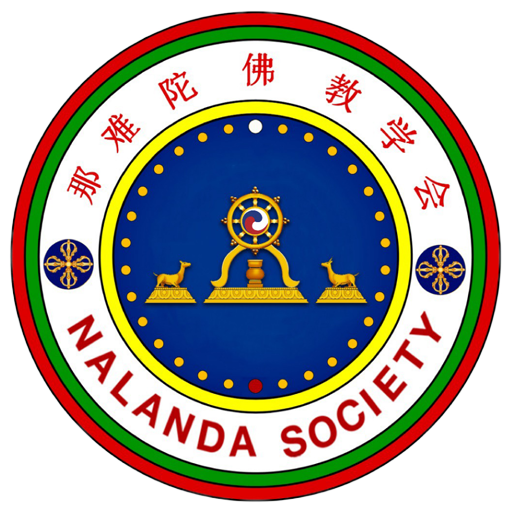 Built on the west hill of Buddha Mandala Monastery, Chittering, the Dhvaja Hall sits on the west and faces the east. The two-storey building (total area 1013 m2) was officially approved for use in early 2012. It can accommodate up to two hundred people. It is a place for group practice, dharma propagation and learning Buddhism. The Big Burmese Jade Buddha sits on the second storey.
Built on the west hill of Buddha Mandala Monastery, Chittering, the Dhvaja Hall sits on the west and faces the east. The two-storey building (total area 1013 m2) was officially approved for use in early 2012. It can accommodate up to two hundred people. It is a place for group practice, dharma propagation and learning Buddhism. The Big Burmese Jade Buddha sits on the second storey.
At the east entrance on the second storey stood four huge sized Heavenly Kings. The inner hall layout is similar to the Chinese Buddhist temple, it has three entrances. The first entrance leads to a small area with two bodhisattva stone wall sculptures, Yamantaka on the left and Vajrapani on the right. The second entrance leads to the Big Buddha which measures about nine meters tall and weighs about 50 tons. The lotus seat under his feet weighs 10 tons; it is painted in gold and surrounded by 1001 small shiny golden Buddhas (Buddhas of the five directions).
At the back of the Big Buddha are the Tibetan Tripitaka – Kangyur and Tengyur. (Kangyur (bka’ ’gyur) is the entire collection of the Buddha’s teachings, Tengyur (bstan ’gyur) are all the commentaries composed by Indian masters.) By the sides of the Big Buddha are his two disciples. Before the Big Buddha stood the burly statues of Weituo (韦陀) and Qielan (伽蓝) bodhisattvas, guarding the triple gems and protecting the right teachings so that they can flourish for many years.
About 6 feet behind the Big Buddha stood a wall partition which is lined neatly with many hand-carved white jade stone tiles with Buddha and Goddess of Mercy carvings. Entering from the west entrance, so called the third entrance, leads directly to this wall partition.
The hall’s interior design is clean and simple. Almost every wall has a painting (dimension: 1510cm x 2440cm) carved from Indonesia’s black volcanic rock. The paintings’ 3-D effect is enhanced with appropriate touches of solid gold paint as well as gold outline. Every painting richly illustrates the dharma. These stone wall paintings are central to bringing out the serenity in the Dhvaja Hall, making it feels like a celestial mandala.
A set of Han and Tibetan banners, sewn using cloth hang on both sides of the inner hall. Buddha names, scriptures and mantras are either printed or sewn on them, to signify the moral prestige of the Buddhas and Bodhisattvas, and to subdue demons and dispel calamities; according to records in the sutra, setting up banners will enable one to accumulate meritorious virtues, avoid sufferings and difficulties, and be reborn in the Pure Lands of Buddhas. In addition, hang gracefully on the coloured glass window panels high up in the main hall are the Eight Auspicious Symbols – a tranquil blend of oriental and western design elements.
On the first storey are three sitting Burmese Buddha statues, each displaying a different set of hand gestures, namely Dharmachakra mudra, Meditation mudra and Earth-touching mudra. Near the steps toward the foyer are two magnanimous and friendly-looking stone lions. Stand here and look into the distance, feel the natural and simple surroundings with your heart, enjoy the mountain breeze blowing in your face, and you will be in high spirits.
At the utmost rooftop of the main hall, points Buddha’s golden finger; symbolically meaning:
- ‘Pointing straight into your mind’ – a representation of Zen teachings;
- The finger points into space, is surrounded by emptiness and is not obstructed by matter
– a full representation of the highest level of Emptiness taught in Buddhism.









